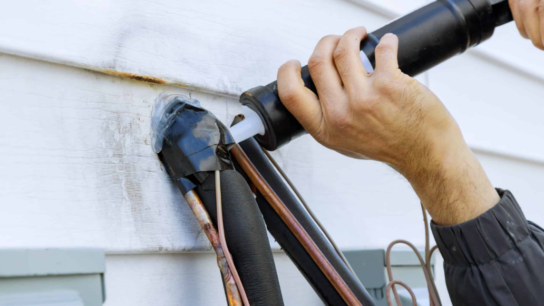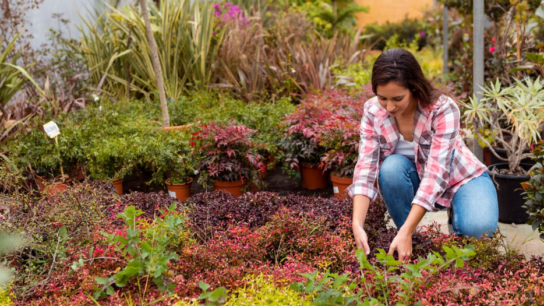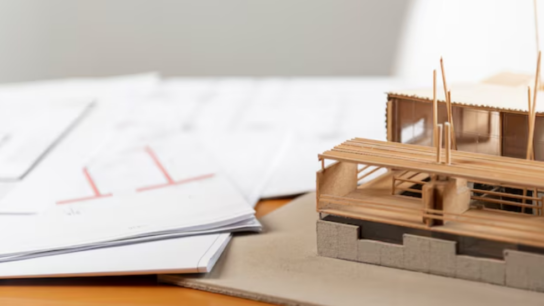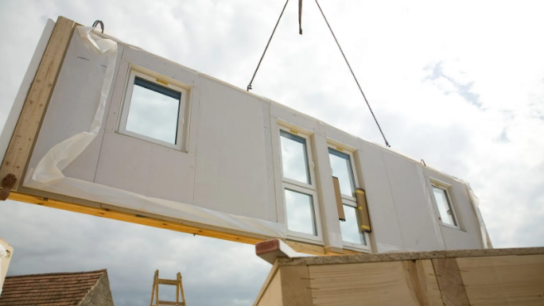Home improvement projects are often focused on enhancing the aesthetics, functionality, and value of a home. However, one essential aspect of home improvement that many homeowners overlook is the incorporation of survival kits for emergencies. While renovating or remodeling your home, it’s critical to integrate survival gear into your plans. Not only can this gear ensure your family’s safety during unexpected events, but it also prepares your home to withstand various types of emergencies, from natural disasters to power outages.
In this article, we’ll explore the essential survival items you should include in every home improvement project. Whether you are building, remodeling, or simply updating your space, making sure you have the right tools and supplies for emergencies is key to building a resilient and safe home.
Why Survival Kits Should Be Part of Home Improvement
When undertaking home improvement projects, it’s easy to focus solely on design elements such as paint colors, flooring, and furniture. However, one of the most crucial components of a resilient home is ensuring that it is equipped to handle emergencies. The right survival kits can help you navigate any crisis—whether it’s a power outage, a medical emergency, or a natural disaster. By incorporating survival gear into your home improvement plans, you can ensure your home is both functional and prepared for any situation.
The Role of Survival Kits in Home Safety
Survival kits are collections of essential tools, supplies, and equipment designed to help you endure emergencies. From first-aid supplies to water filtration systems, these kits provide life-saving items that can keep your family safe when other resources are unavailable. Whether you’re facing a temporary power outage or a prolonged disaster, survival kits are crucial for maintaining health, safety, and well-being.
During home improvement projects, think of survival kits not just as an afterthought, but as a key feature of a well-prepared home. These kits should be strategically stored and easily accessible in case of emergencies.
Must-Have Survival Kits for Every Home
When incorporating survival gear into your home improvement plans, it’s important to consider the various types of kits that can address different emergency situations. Here are the must-have survival kits every home should have.
Emergency Food and Water Storage
The most important items in any survival kit are food and water. Having an ample supply of both ensures that your family has the resources they need during an emergency.
Water Storage and Filtration
You should store enough water to last your household for at least 72 hours. This typically amounts to one gallon of water per person per day for drinking, cooking, and hygiene. Store water in food-grade containers to prevent contamination. It’s also wise to have water purification tablets or portable filters on hand. These tools allow you to make any water source safe for drinking, which is especially useful in situations where your stored water runs out.
Emergency Food Kits
For food, opt for non-perishable, high-calorie, and nutrient-dense items such as freeze-dried meals, canned goods, and MREs (Meals Ready-to-Eat). These items are compact, easy to store, and have long shelf lives. When selecting emergency food, ensure it includes a balance of proteins, carbohydrates, and fats to sustain energy during prolonged emergencies.
For more survival food storage options and ideas, visit Titan Survival Kit, where you’ll find various emergency food supplies designed for long-term storage.
First Aid Kits for Emergencies
Having a comprehensive first aid kit is essential for treating injuries during emergencies. Whether you’re dealing with cuts, burns, or other medical issues, your first aid kit should be stocked with the necessary supplies to handle various situations.
Key Components of a First Aid Kit
- Bandages and Gauze: Various sizes of adhesive bandages, gauze pads, and medical tape.
- Antiseptics and Ointments: For cleaning wounds and preventing infections.
- Pain Relief: Pain relievers such as aspirin, ibuprofen, or acetaminophen.
- Medications: Any prescription medications or items required for specific family health needs.
- Medical Tools: Scissors, tweezers, gloves, and a thermometer.
Additionally, keep emergency phone numbers and medical information on hand to help guide you through medical situations. You can also consider taking a basic first aid and CPR course to enhance your preparedness.
Lighting and Power
When the power goes out, you’ll need reliable lighting and a source of energy to keep essential appliances running. Power outages can occur during storms, natural disasters, or accidents, so having emergency lighting and backup power is vital.
Flashlights and Lanterns
Flashlights, headlamps, and lanterns should be included in your home survival kits. Choose durable, waterproof models that provide reliable light during outages. Battery-powered LED lights are ideal because they offer long-lasting illumination and consume less energy. Make sure to store extra batteries or invest in rechargeable lanterns that can be powered using solar energy or hand cranks.
Solar-Powered Chargers
For longer outages or situations when the power grid is down, a solar-powered charger is a great addition to your kit. These chargers harness the sun’s energy to power essential devices like cell phones, radios, and small appliances. Solar-powered lights can also be used to illuminate your home during the night.
For more ideas on survival tools and backup power systems, visit Titan Survival Kit, where you can find high-quality emergency lighting solutions and solar-powered devices.
Multi-Tool and Emergency Tools
In emergencies, having the right tools on hand is critical for making quick repairs, building shelters, or even self-defense. A multi-tool is a versatile and compact solution that combines several essential tools into one convenient device.
Must-Have Tools for Your Survival Kit
- Multi-Tool: A multi-tool includes several handy tools like a knife, pliers, screwdriver, can opener, and bottle opener. It is one of the most versatile pieces of equipment in any survival kit.
- Fire Starter Kit: Fire starters, waterproof matches, and lighters are essential for warmth and cooking.
- Duct Tape: Known as the “band-aid of the home,” duct tape is a versatile tool that can be used for quick fixes, sealing cracks, and securing items in place.
These tools ensure that you are prepared for a variety of scenarios, whether you need to make repairs or build shelter.
Shelter and Warmth
In emergencies where power is lost or temperatures drop, it’s important to have shelter and warmth available. Emergency blankets, sleeping bags, and other warming tools should be part of your survival kit.
Emergency Blankets
Emergency thermal blankets are compact, lightweight, and can retain body heat, which is crucial for preventing hypothermia during a cold emergency. These blankets are an affordable and space-saving addition to your kit.
Sleeping Bags
Investing in high-quality sleeping bags suitable for extreme temperatures is essential for keeping your family safe and warm. Make sure that these sleeping bags are compact enough to store easily but large enough to keep everyone warm in the event of a cold-weather emergency.
Maintaining Your Survival Kits
Building a resilient home with the right survival kits is just the first step. To ensure your kits are effective when you need them, regular maintenance is crucial.
Regularly Check Supplies
Food, water, and medical supplies should be checked periodically. Food and water items have expiration dates, so make sure to replace them before they expire. Check batteries and replace any used or expired items in your first aid kit, tools, and survival gear.
Keep Kits Easily Accessible
Your survival kits should be stored in an easily accessible location. It’s best to keep them in areas where everyone in the household can easily locate them, such as in a designated emergency supply closet, under the bed, or in a pantry.
FAQs About Survival Kits for Home Improvement
1. How much food and water should I store in my survival kit?
You should store at least one gallon of water per person per day for drinking, cooking, and sanitation. For food, ensure you have enough non-perishable items to last for at least three days. Make sure to store a variety of meals, including high-calorie items and snacks.
2. How often should I update my survival kit?
It’s important to update your survival kit at least once a year. Check expiration dates on food, medications, and batteries. Also, test any emergency tools to ensure they are working properly.
3. Can I create a survival kit for my car?
Yes, it’s a good idea to have a smaller version of your home survival kit in your car. This should include water, snacks, a first aid kit, a flashlight, and a multi-tool. A car survival kit can be especially useful during long road trips or in the event of a breakdown.
4. What should I do if I don’t have enough space for a large survival kit?
If you have limited space, prioritize the most essential items such as water, a first aid kit, a flashlight, and some non-perishable food. You can create compact survival kits for different areas of your home or car, making sure you have access to the essentials when needed.
5. How can I make my home safer in an emergency situation?
In addition to having a well-stocked survival kit, ensure your home is equipped with safety features such as smoke detectors, fire extinguishers, and carbon monoxide detectors. Create an emergency evacuation plan and practice it with your family to ensure everyone knows what to do in case of an emergency.
Conclusion
Building a resilient home starts with proper planning, and integrating survival kits into your home improvement projects is an essential part of that process. From food and water storage to first aid kits, emergency tools, and warmth supplies, these items can help you survive and stay safe in an emergency. Regular maintenance of your survival kits and ensuring they are easily accessible will ensure that you’re always prepared for the unexpected.
For more information on survival tips and emergency preparedness, visit https://titansurvivalkit.com/. Explore their wide range of survival gear and training resources to ensure your home is ready for any situation. For further insights on home improvement, visit Make The House.








